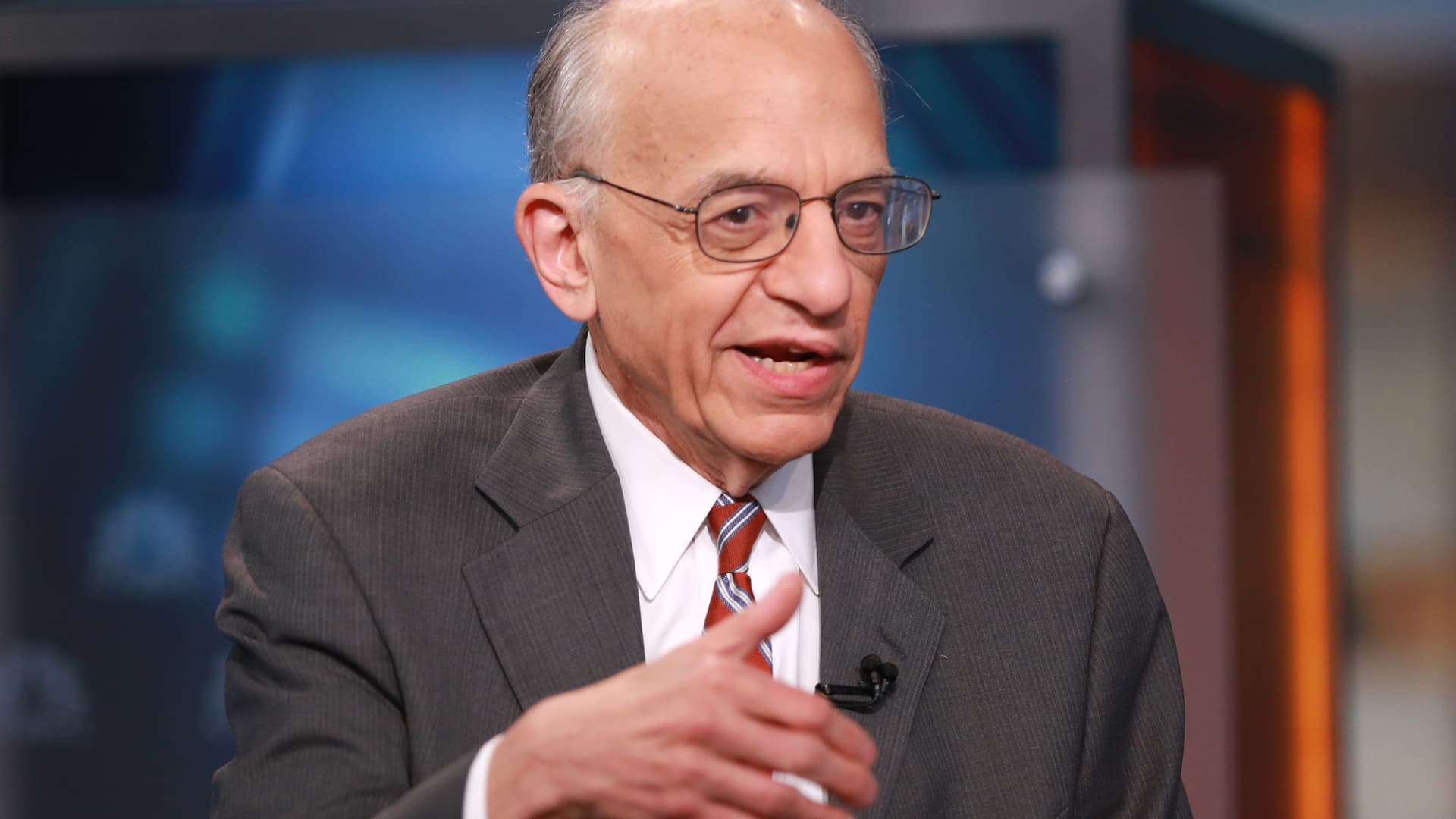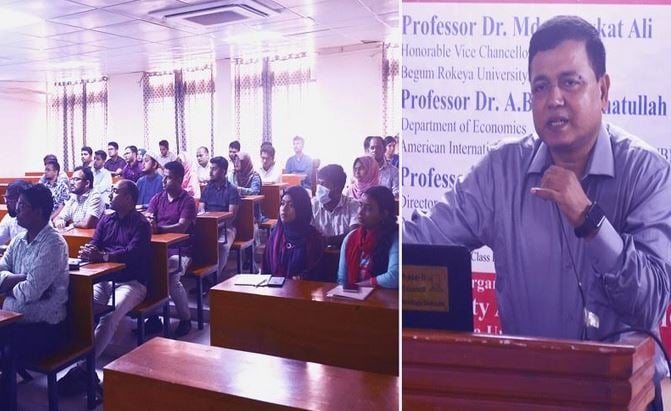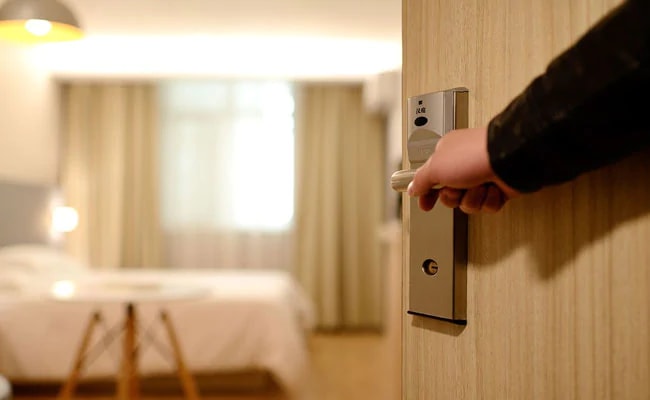At Houston’s First LGBTQ+ Senior Center, Lunchtime Is for Building Community
As noon — lunchtime — rapidly approaches, it is somehow both hot and muggy and pouring rain on a Wednesday in late May in Houston, but the vibes inside the Law Harrington Senior Living Center are totally sunny. In the Annise Parker Multipurpose Room, named for the city’s first openly gay mayor, elderly residents are […]


As noon — lunchtime — rapidly approaches, it is somehow both hot and muggy and pouring rain on a Wednesday in late May in Houston, but the vibes inside the Law Harrington Senior Living Center are totally sunny. In the Annise Parker Multipurpose Room, named for the city’s first openly gay mayor, elderly residents are sidling up to their tables as workers prepare to distribute lunch trays while they chat with regulars and newcomers alike.
On the menu today: King Ranch casserole, a Texas staple that’s sort of like cheesy layered enchiladas, plus steamed broccoli and carrots. For the folks who aren’t feeling the day’s chosen casserole, there’s cold sandwiches and tons of snacks scattered around the room. Everyone, though, is excited for dessert — an iconic Little Debbie Nutty Buddy bar. Most were really looking forward to that upcoming Friday, when a local funeral home was scheduled to drop off donated cupcakes for a monthly party celebrating all the Center’s June birthdays.
“That’s kind of ironic, the funeral home sponsoring the birthday party cupcakes,” I said as I chatted with one particularly gregarious resident.
Her response? “I think they’re out here trying to recruit new customers.”
Law Harrington’s well-appointed building on Cleburne Street in Houston’s historic Third Ward looks much like the many luxury midrise apartment complexes that dot the city’s landscape — it boasts a sleek modern design, a dog park, a gym. But as the city’s only senior living facility specifically focused on supporting the city’s aging LGBTQ+ population, this building isn’t your average old folks home. Inside these walls is a vibrant hub for building queer community among LGBTQ+ elders, all while enjoying a hot meal with friends and neighbors.
In Houston and across the country, LGBTQ+ seniors are uniquely vulnerable to housing instability and poverty in their golden years. They’re more than twice as likely than non-LGBTQ people to live alone without family, which means that many lack the support network that becomes increasingly important as a person gets older and needs help cooking meals, getting to medical appointments, or doing chores around the house.

“Our seniors have been on the front lines of our movement, and they didn’t really have the high-powered oil and gas jobs that many people in Houston had,” says Dan Cato, director of marketing and communications for the Montrose Center, which operates the Law Harrington Senior Living Center. “They were our bartenders, our entertainers, our drag queens, and so they are on very limited incomes. We wanted to support them in a way that meant that they could stay in the neighborhoods that they helped create.”
Law Harrington’s location was chosen specifically because of its proximity to both the Montrose, historically the nucleus of queer culture in Houston, and the Third Ward, a historically Black neighborhood. Both the Third Ward and the Montrose have been impacted heavily by gentrification in recent years, displacing Black and LGBTQ+ seniors from their respective homes as wealthier, less diverse residents move in. Since opening its doors in 2021, Law Harrington serves as a place of connection for two communities, both of which are more likely to experience financial instability, housing discrimination, and other inequities as they age. About a third of LGBTQ+ seniors are low-income, and those rates increase dramatically for transgender seniors, people of color, and persons over the age of 80. Even though Black seniors only make up about 9 percent of the total American elderly population, they make up 21 percent of all elders living below the federal poverty level. They also experience food insecurity at a rate that’s nearly four times higher than their white counterparts.
Open to all people over the age of 62 who are income-qualified to live there, the Law Harrington is not exclusively home to LGBTQ+ people. It can’t be, because of the way that federal housing law works — it must be equally open to all regardless of their sexuality or gender identity. But the Center is unapologetically and unabashedly queer-centric. It’s named for Charles Law and Gene Harrington, both legendary queer activists with roots in Houston. The space is decked out with trans pride flags and rainbows are abundant. Still, there’s a large contingent of non-LGBTQ+ residents, and the Center’s staff members aren’t afraid to have confrontations with anyone who might not be respectful of their queer neighbors.
“There’s a pretty large contingent of residents who are not LGBTQ+, and every LGBTQ+ senior center has kind of struggled to find the balance,” Christian Capo, the Center’s social services program director, says. “But we’re very insistent on being clear that this is a LGBTQ+ affirming space, and if you’re not comfortable with seeing 17 rainbow flags every day, that’s not going to work.”
Lunch is delivered daily by Baker Ripley, a 100-plus-year-old Houston nonprofit that operates a sprawling range of social programs across the city. Meeting the nutritional needs of seniors, many of whom have dietary restrictions or specific dietary requirements, is a highly specific task. Most of their diets are low-sodium and low-calorie, to help with conditions like hypertension or diabetes. Each meal is developed in conjunction with a registered dietician to ensure that the meals can actually meet the needs of those who eat them. Judging by the May menu posted outside the lunchroom, there’s an emphasis on lots of veggies, grains, and pulses like lentils, and milk is offered with most meals to help combat issues like osteoporosis and vitamin D deficiency.
You don’t have to live at Law Harrington to score a lunch plate free of charge. Seniors over the age of 60 who live elsewhere are asked to sign up a day in advance for their hot meal, so that Law Harrington employees can ensure that they’ve ordered enough meals for everyone who needs to eat. Diners who don’t live at Law Harrington are encouraged to show up early and enjoy free coffee, play board games or dominoes, and of course, socialize with the folks in their community. Today, there are about 45 people signed up to eat, including both first-time visitors and longtime residents.


Carmen, a resident who lives at Law Harrington with his cat, Princess, says that lunch is his favorite part of living at Law Harrington. Born in North Carolina, he was living in Atlanta when he came to Houston for the first time, and fell in love with the Montrose’s vibrant queer culture. He moved here in 1981, but eventually, as its real estate became more desirable among real estate developers, Carmen got priced out of the Montrose. At Law Harrington, he can both live affordably in the neighborhood he loves while getting the support he needs. He can obtain medical care, get a ride to a nearby grocery store, hang out in one of the cozy chairs in the building’s library, or simply relax at home with Princess before coming to lunch to socialize.
It’s this sense of community that the Center’s congregate meal program hopes to foster. “Congregate meal program” is a jargony term popular in the elder care world that simply means healthy, nutritious meals that are served in a group setting, according to the Nutrition and Aging Resource Center. Research shows that congregate meal programs are incredibly beneficial for seniors for a number of reasons, not least of which is that they can combat the serious loneliness that many elderly people experience. For many seniors these meals are literally a lifeline — getting out for lunch and staying social can help them stay healthy and maintain their independence for longer.
“It really is all about the interaction. Maybe you can’t come every day because you’ve got doctor’s appointments or you’re going to your grandkid’s soccer game, but knowing that you have the option to come and have a meal five days a week makes it a lot easier to keep interacting,” Capo says. “We want everyone to have some consistency and some social interaction in their lives, on their terms. The loneliness is really the number one thing we’re trying to address.”
According to the residents, not all the dishes served here are winners, but they agree that the quality of the food is generally excellent. Even Jeremy, a resident who had a few gripes about some of the Center’s policy choices and expressed an interest in more pork-free options for religious reasons, couldn’t help but brag. “The food really has gotten much better over the last two years,” Jeremy said as he enjoyed his lunch. “And the service is impeccable. Everybody is so accommodating, for the most part.”
Beyond lunch, the team at Law Harrington also works to keep seniors fed the other two meals of the day. The apartments are equipped with kitchens, and many residents cook meals for themselves and their neighbors. An emergency pantry stocked with staples provided by the Houston Food Bank is open a few times a week, and the nonprofit Common Market drops off boxes of fresh produce every two weeks that residents can use to cook at home. Second Servings, a nonprofit that rescues unused food from restaurants and grocery stores, frequently drops off meals and regularly hosts a pop-up grocery store at the Center where seniors can “shop” for produce and pantry staples.
Richard, a resident who’s been at Law Harrington practically since it opened, especially loves the produce deliveries, which he uses to make a big batch of veggie soup that he slow-cooks all night long. “I’ll spend an hour cleaning up the vegetables and cutting them, then you just throw it all in there with chicken broth,” Richard says. “It doesn’t matter what you put in there, it always tastes wonderful.” His lunch companion Peter, on the other hand, is more of a baker, who just finished off the last of a homemade red velvet cake.
The residents of Law Harrington have lived a thousand lives before landing here. Before retirement, Richard worked as a teacher, a fashion consultant, and a hospice chaplain. One woman, whose family had been heavily involved in the Nation of Islam organization in her youth, showed me a photo of herself as a smiling 20-something standing next to the legendary boxer Muhammad Ali, taken shortly before he famously refused to make himself eligible for the draft during the Vietnam War. All of these experiences make for excellent conversation over lunch, and the atmosphere in the dining room is heady with stories, cheeky jokes, even a little light political chatter.
Now nearly five years old, Law Harrington’s staff is continually looking to build even more bridges between the people it serves and the broader community, especially young queer people. There’s discussions of bringing in participants from Hatch, the Montrose Center’s group for LGBTQ+ teens, and a few summers ago, a group of Boy Scouts built community gardens for the residents to complete their Eagle Scout projects. The Houston Gaymers, a group for LGBTQ+ video game enthusiasts in the city, stop by yearly to spend a day playing board games and chatting with the residents.
“The coolest thing about this space is the way that it brings so many different people together, and you can really see the impact of that,” Capo says. “The conversations that we’ve had here, and the tolerance and community building that comes out of people just talking to each other is incredible. There was a time in the beginning when people were a little more shy, but now you see people from very disparate backgrounds and life experiences all intermingling and hanging out together. It’s incredible to see.”












































































































































































